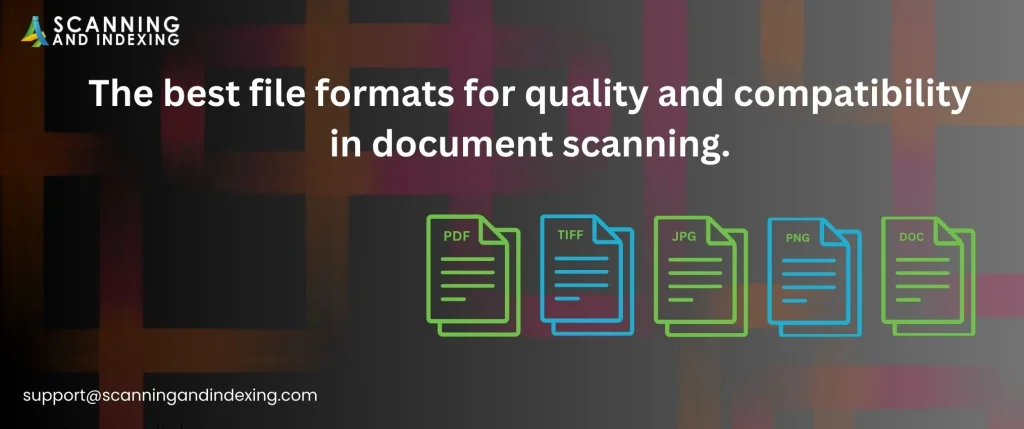Which file formats provide the best quality and compatibility for document scanning?
Whether it’s submitting an application to a university or providing immigration documents, gone are the days when physical papers were used as the principal media. In today’s time, most of these processes are conducted through online portals, from identity verification to induction and interviews. Besides, with the popularity of remote communication and interaction between individuals and businesses around the world, the need to have digital documents has skyrocketed. With this, the hassles of mailing physical papers and maintaining them with optimal security can be easily eliminated.

However, to ensure the document scanning and imaging process is done in the best possible manner, you need to know more about the compatible file formats. If chosen randomly, the digital document will either have distortions or become corrupted, thereby leading to severe complications. That’s why we have curated a detailed guide, explaining the importance of file formats in document scanning and the most compatible formats you can use.
What is document digitization?
Before you hire document digitization services, it’s important to have clarity on the same. As the name implies, it is a process through which physical documents are scanned and converted into digital file formats, like PNG, PDF, TIFF, and JPG. These digital copies can be easily shared over mail or uploaded on any online portal without any hassle. Besides, with cloud network compatibility, it becomes easier for owners to access their documents from remote locations even if they don’t have their devices in use. On top of everything, storage, and management of digitized documents is much easier when compared to physical papers.
Why choosing the file format is important for document digitization?
Understanding the need to choose the right file format during document scanning will eliminate the risks of corrupted documents, missed information, or improper handling. Below we have briefly described the significance of choosing a reliable file format for every digital document during imaging and scanning.
- Compatibility: Since different software portals and platforms accept multifarious file formats, it is important to choose one that can be widely accepted. This way, you won’t have to convert the files from one format to another or worry about not being able to access the documents with ease.
- Increased searchability: With formats like PDF, you can leverage features like Optical Character Recognition through which archiving and retrieving of documents by using texts becomes much easier.
- Optimal file quality: Also, when you choose a proper file format during document scanning and imaging, you ensure the quality of the converted digital copy is not compromised. The digital document represents the original paper version in all senses with no distortion of the QR code, barcode, or any other important detail.
- Security features: Additionally, digital documents with proper file formats can be secured using multifarious techniques, like password protection, encryption, two-factor authentication, read-only access, and many more.
Which are the most compatible file formats for document scanning?
Since now you have a clear understanding of the importance of using the correct file format for digital document storage and accessibility, let’s get into knowing the popular file formats you can use.
- PDF or Portable Document Format: It allows easy sharing of digital documents without compromising the quality and information. Additionally, PDF documents can be searched thoroughly using texts, thanks to the OCR feature of most online portals.
- DOC/ DOCX: One of the most popular file formats you can use is that of DOC or DOCX in Microsoft Word. It supports editing and reviewing, password protection, read-only features, and many more. However, it doesn’t support static archival.
- TIFF or Tagged Image File Format: This format supports multiple pages in a single document, ensuring you can create digital copies of high-quality documents and images with ease.
- PNG or Portable Network Graphics: Although the file sizes will be greater than the JPG format, this one will compress the scanned picture or document without leading to loss of information while maintaining optimal quality.
Conclusion
In this article, we have talked about the major file formats that are supported for most document digitization services. Based on our explanations, it’s your call to choose the right format that can make the documents easily archivable and accessible.
If you want to partner with us, send your requirements to [email protected].





